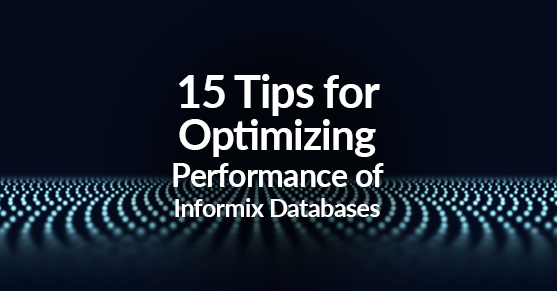Performance issues with Informix databases can have a significant impact on business operations, leading to slow query response times, reduced productivity, and increased costs. To avoid these problems, businesses must take a comprehensive approach to database management. This blog outlines the top 15 things to look at when addressing performance issues using an Informix database.
1. Optimize Database Indexes
Ensuring that all necessary indexes are in place and being used efficiently can significantly speed up queries. Ensure that you have an index for the columns used frequently in the WHERE clause, and avoid creating indexes for columns that are not frequently used.
2. Optimize Queries
Query optimization is critical in enhancing performance. Using appropriate indexes and considering the EXPLAIN command to understand how Informix is executing queries can help in identifying the bottlenecks in your SQL code.
3. Allocate Sufficient Memory
Adequate memory allocation is critical for the database server to run smoothly. Increasing the amount of allocated memory may be necessary to enhance performance.
4. Optimize Configuration Settings
Configuration settings should be examined and optimized, such as increasing the number of shared memory segments or database connections. Also, consider the size of the buffer pool, as this can affect I/O performance.
5. Monitor High CPU Usage
High CPU usage can be a significant performance issue. Upgrading hardware or optimizing queries may be necessary to reduce CPU usage.
6. Optimize Disk I/O
Disk I/O can also be a bottleneck, and optimizing the disk subsystem or using faster disks may be necessary.
7. Defragment Tables
Table fragmentation can cause performance issues, particularly on larger tables. The REORG command can be used to defragment tables.
8. Update Statistics
Statistics should be up-to-date and accurate. The UPDATE STATISTICS command can be used to refresh them.
9. Optimize Locking
Lock contention can occur when multiple queries try to access the same data simultaneously. Optimizing queries and increasing the lock timeout value may be necessary to address this issue.
10. Minimize Transactions
Transactions can impact performance, and minimizing the number of transactions by using smaller transactions or optimizing queries is recommended.
11. Address Network Latency
Network latency can be an issue if the database is located on a remote server. Optimizing the network connection or moving the database to a local server may be necessary.
12. Optimize Database Design
Database design is also important, and ensuring proper normalization, denormalizing tables, and adding indexes where necessary can improve performance.
13. Use Stored Procedures
Stored procedures can improve performance by reducing the number of queries executed.
14. Schedule Regular Backups
Regular backups should be scheduled during off-peak hours or using a backup solution that doesn’t impact performance.
15. Upgrade to the Latest Version of Informix
Finally, upgrading to the latest version of Informix can often result in performance improvements by taking advantage of new features and enhancements.
Conclusion
In conclusion, addressing performance issues with an Informix database requires a comprehensive approach that includes optimizing indexes, queries, memory allocation, configuration settings, and network connectivity. By following these technical recommendations, businesses can improve database performance and productivity and reduce operational costs.
Visit our Informix Virtual-DBA Services page or contact us for more information.

